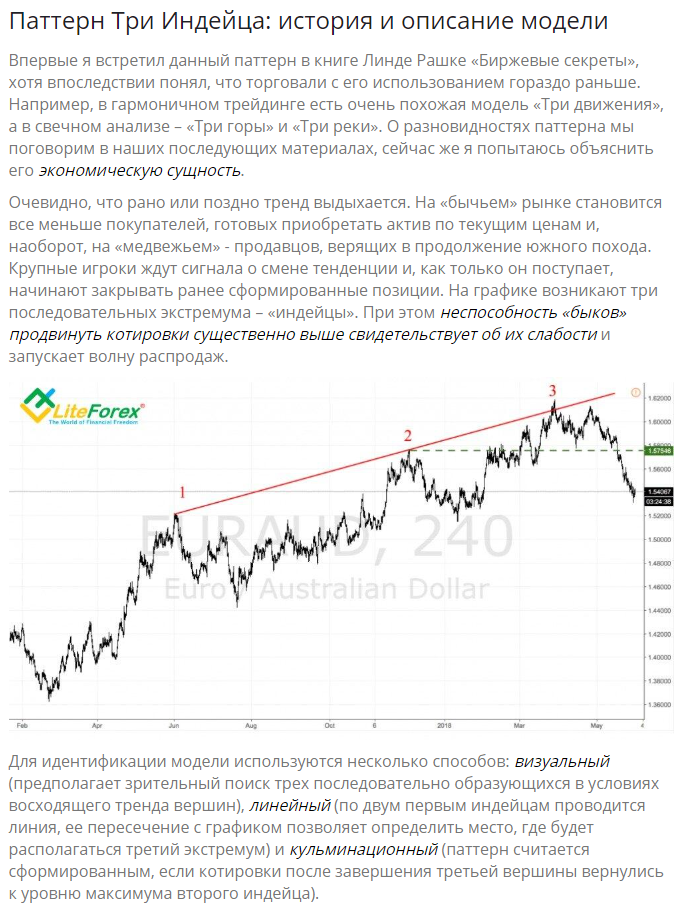Pair trading and multicurrency arbitrage. The showdown. - page 114
You are missing trading opportunities:
- Free trading apps
- Over 8,000 signals for copying
- Economic news for exploring financial markets
Registration
Log in
You agree to website policy and terms of use
If you do not have an account, please register
I was actually referring to other Indians:-)
Everyone has their own Indians. ))))
I have them very clearly formed from here.
This is how the pattern and its description should look like.

Everyone has their own Indians. ))))
I got mine from here and they are very clearly formed.
This is how the pattern and its description should look like.
and on H4 it is not there...
there are some robed Indians there :-))
and it's not on the H4...
there are some robed Indians :-)
I see, thanks for the science. Now we'll look for "Indians on the mountain". )))
t be different in complexity, but they are more understandable as a task and the logic is at least present. But the properties of series are often beyond logic))))) I personally knew A.I. Rubinstein (he lived in Malakhovka and taught at the Forest Institute in the late 90's) and watched his doctoral thesis on rows, it's a bummer))).
Not many people understand Lagrange when studying at the institute)))) But at least they know his surname )))))
Langrange is a boy in trousers in comparison with the king offinite elements of the theory of relativity Lantzosz,
calculation of eigenforms of oscillations by the method of Lantzosz is applicable at dynamic influence, impulses,
and also is applied for complex calculations of random vectors.
almost by accident
(the original is here https://www.mql5.com/ru/forum/455209/page81#comment_50574014)
and the second part, those that are less than X% are noisy and go mostly (but not always) with a phase shift to the big ones :-)
and if the local trend is made by the local big guys, then the more global trend (senior tf) is made by all sorts of rubbish....
the strength of the weak among them. More specifically - when they coincide with the big ones.
"haberdasher and cardinal" is a real strength.
almost by accident.
(original here https://www.mql5.com/ru/forum/455209/page81#comment_50574014)
and the second part, those that are less than X% are noisy and walk mostly (but not always) with phase shift to large ones :-)
and if the local trend is made by the local big guys, the more global trend (senior tf) is made by all sorts of rubbish....
the strength of the weak among them. More precisely - when they coincide with the big ones.
The"haberdasher and cardinal" is a real strength.
In the currency basket, all instruments are equal :-)
there is above on the topic - if the currency is repelled from the general pack twice, it is levelled (close the gap). And it's not evil market makers, it's just economics and the properties of currencies (which are not quite commodities)
and that CCFp is not quite a commodity either... (because it has averages in it).
the principle is clear, you don't need 28 pairs, it is enough to operate with currencies which are much smaller in number.
In the currency basket, all instruments are equal :-)
Floating spread. And again we replenish the deposit.
at the level of an idea that requires testing and realisation:
in order not to see logarithms and a graph shrinking (diverging) like sqrt(t), and you will never get used to it, you have to dislocate your head, which is used to linear worldviews,
you can go the way of calculating a market-neutral currency basket.
It is impossible to really create such a basket in equity (i.e. "trade") in margin trading, but it can be calculated and used as an indication.
For each separate moment t, on the basis of exclusive prices, the currency basket minimising further mutual movements can be calculated. Even if it is not perfect, from the principle of "all bundles diverge": the basket will die out after some time if it is not changed. The main thing is that it can be calculated for any moment.
The formula fundamentally will not differ much from "how to calculate volumes in pair trading and minimise the influence of USD"
As above on the branch - bring in the common base (USD), take into account the size of lots; everything fluctuates as ln(USDxxx) (this is the effect of the fact that the common base is chosen);
from your personal perceptions you can now calculate the basket that the total amount=100%
fluctuations of shares (their difference and relations) in such a basket = normalised price.
A poet's dream - normalised price of an instrument into an oscillator 0...100
In the currency basket, all instruments are equal :-)
Isn't it easier to enter with one instrument with a risk of 30% and to take a couple of points every 15 minutes?